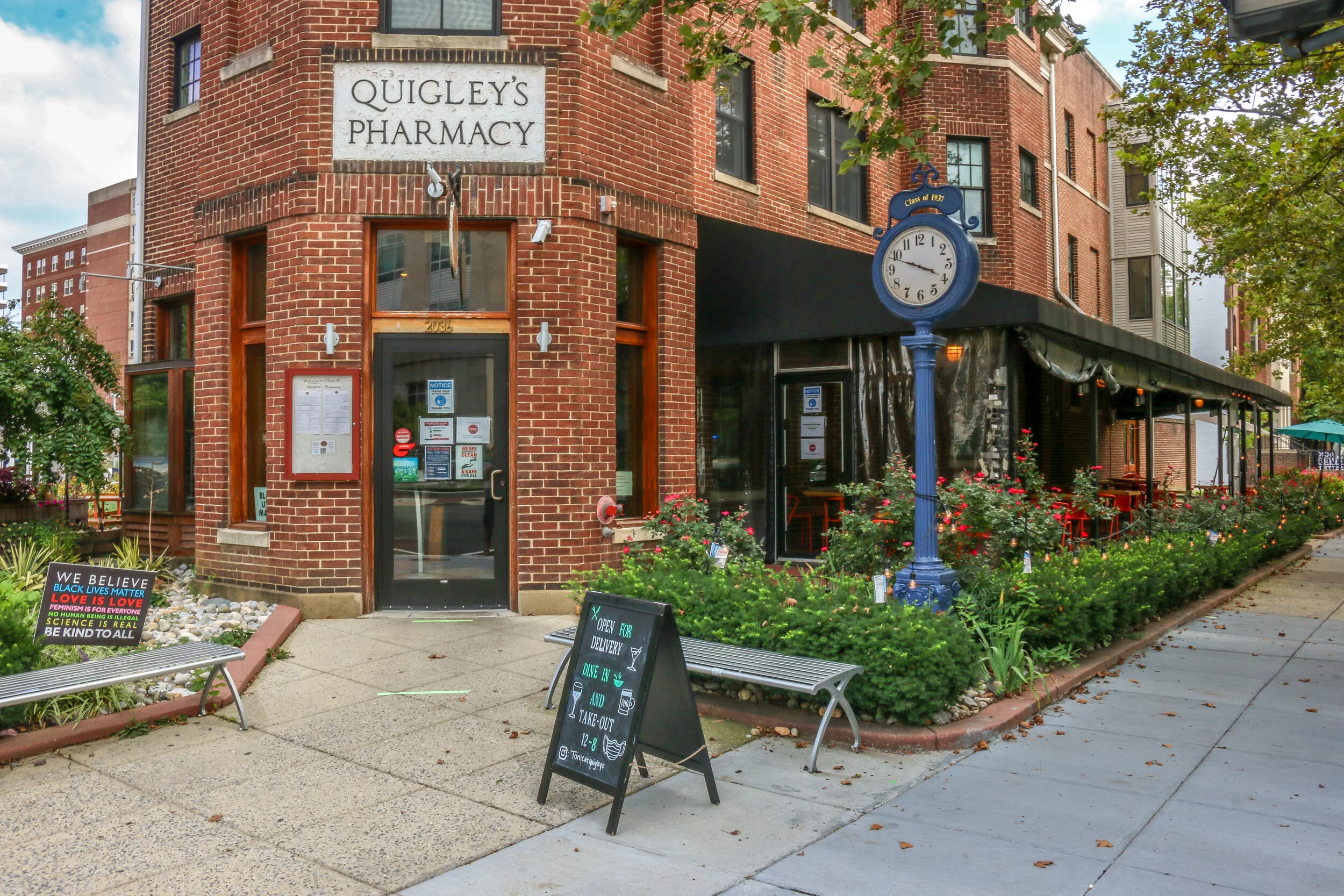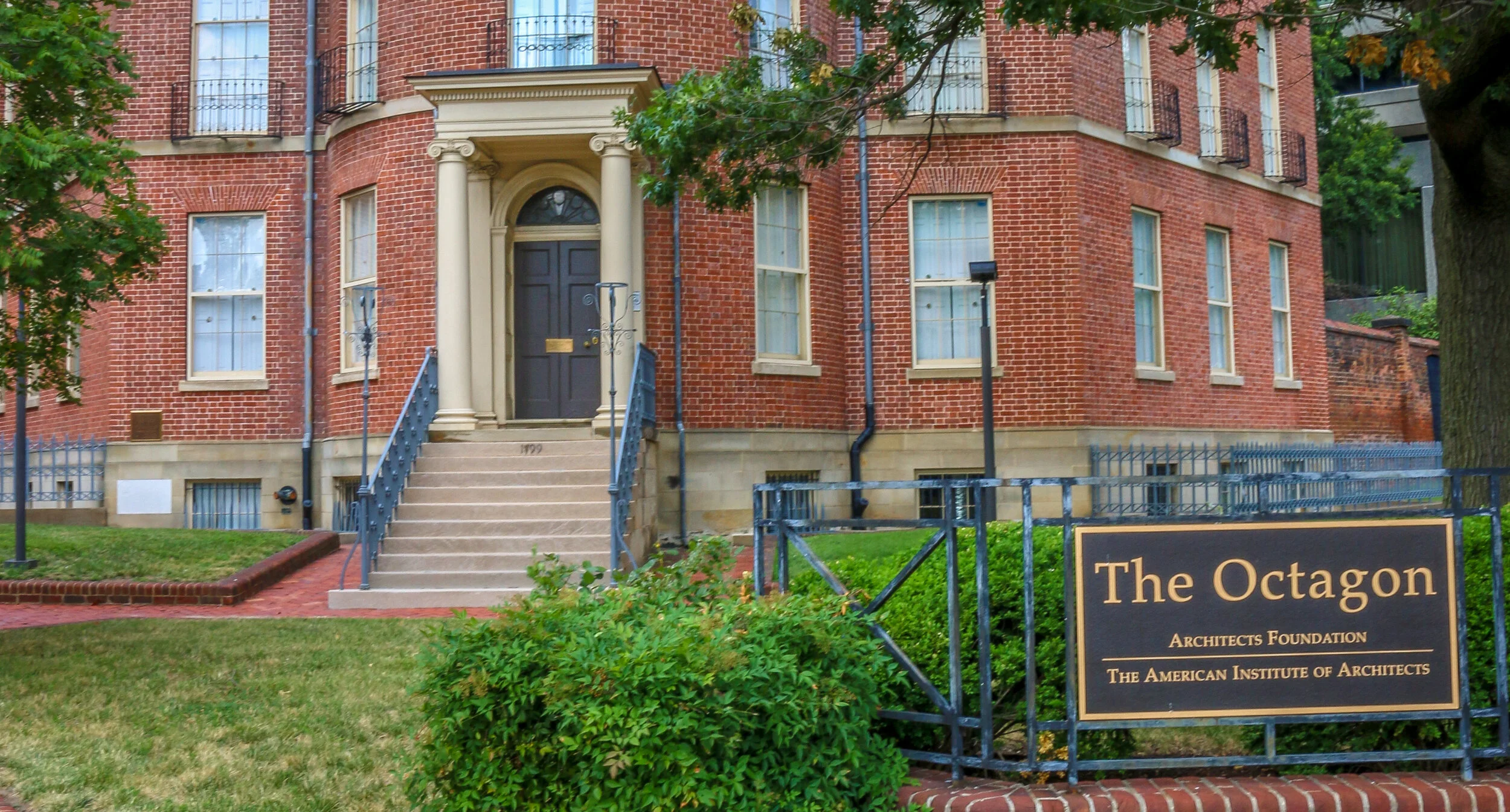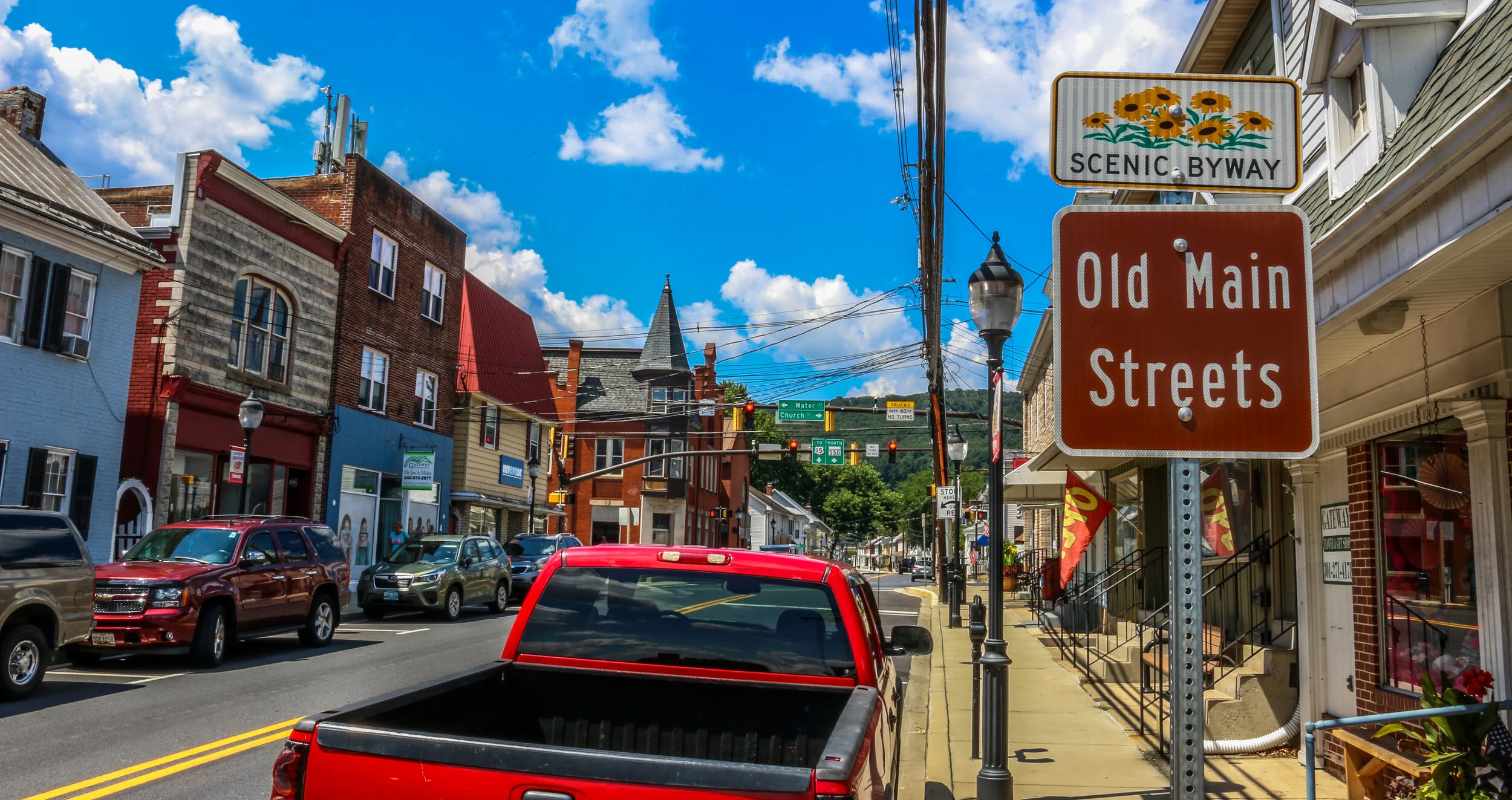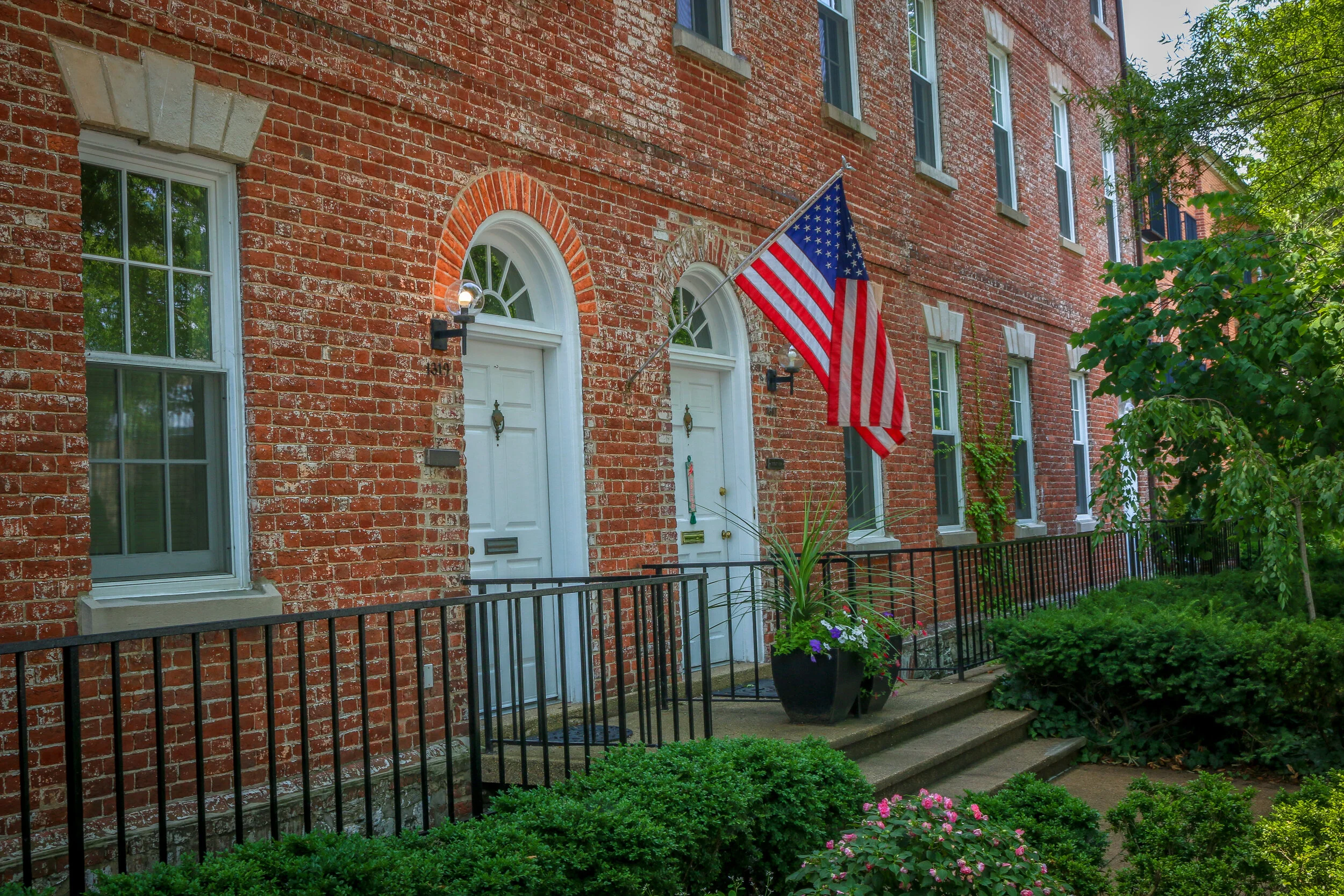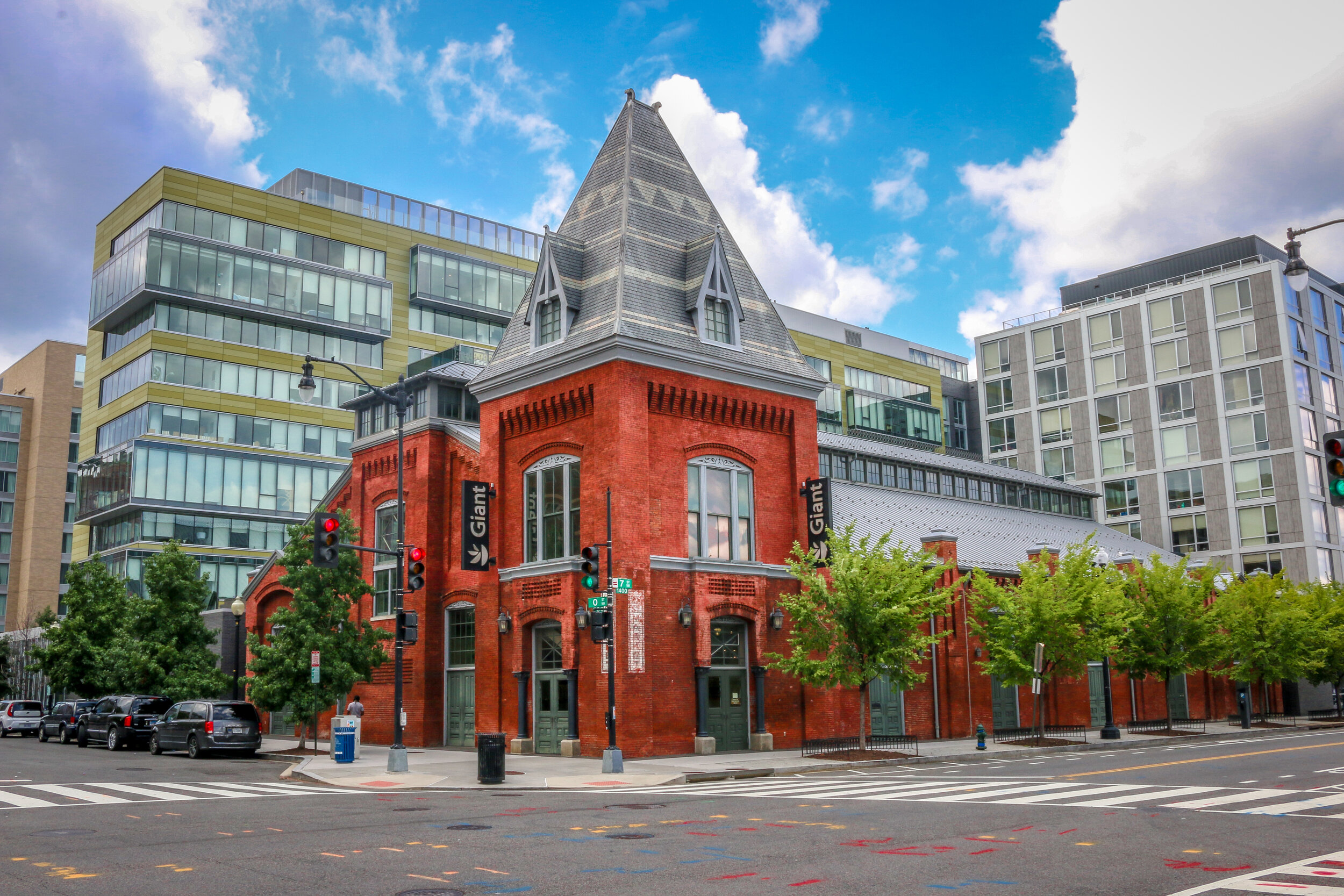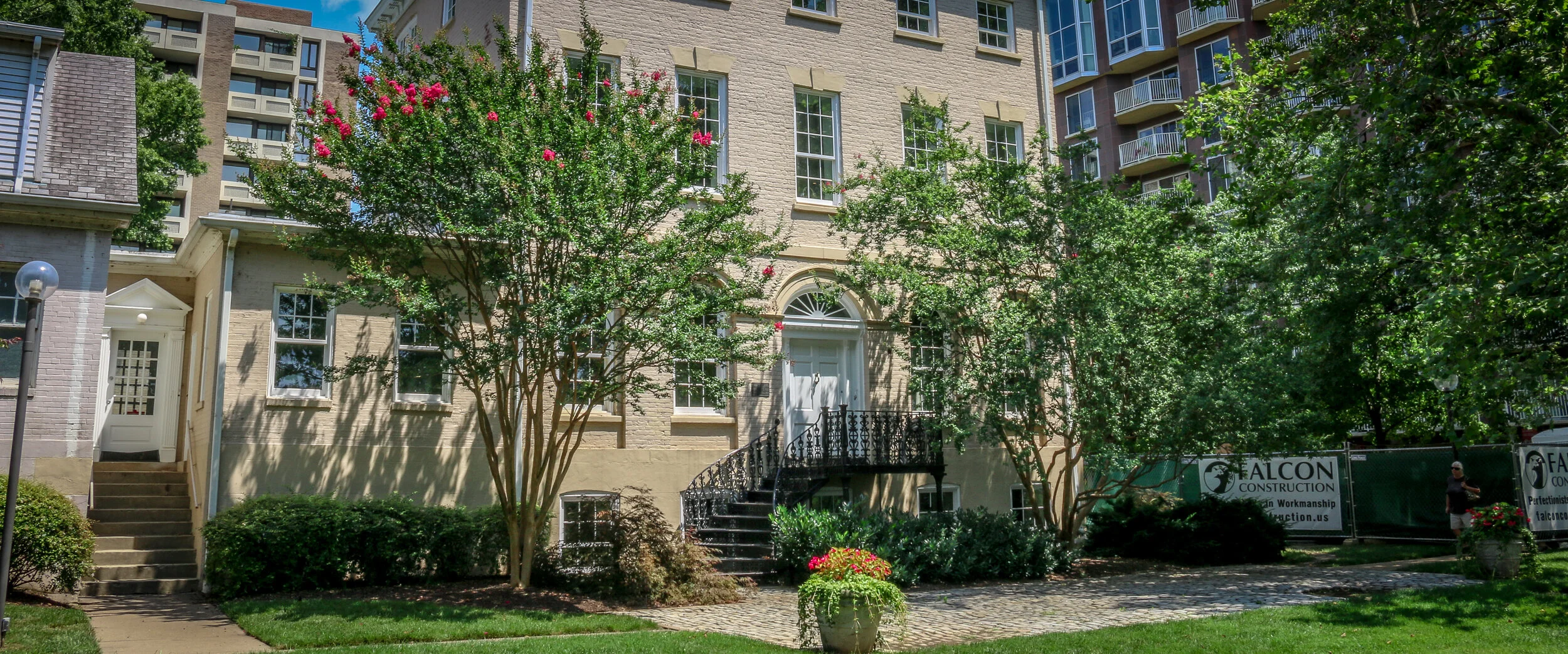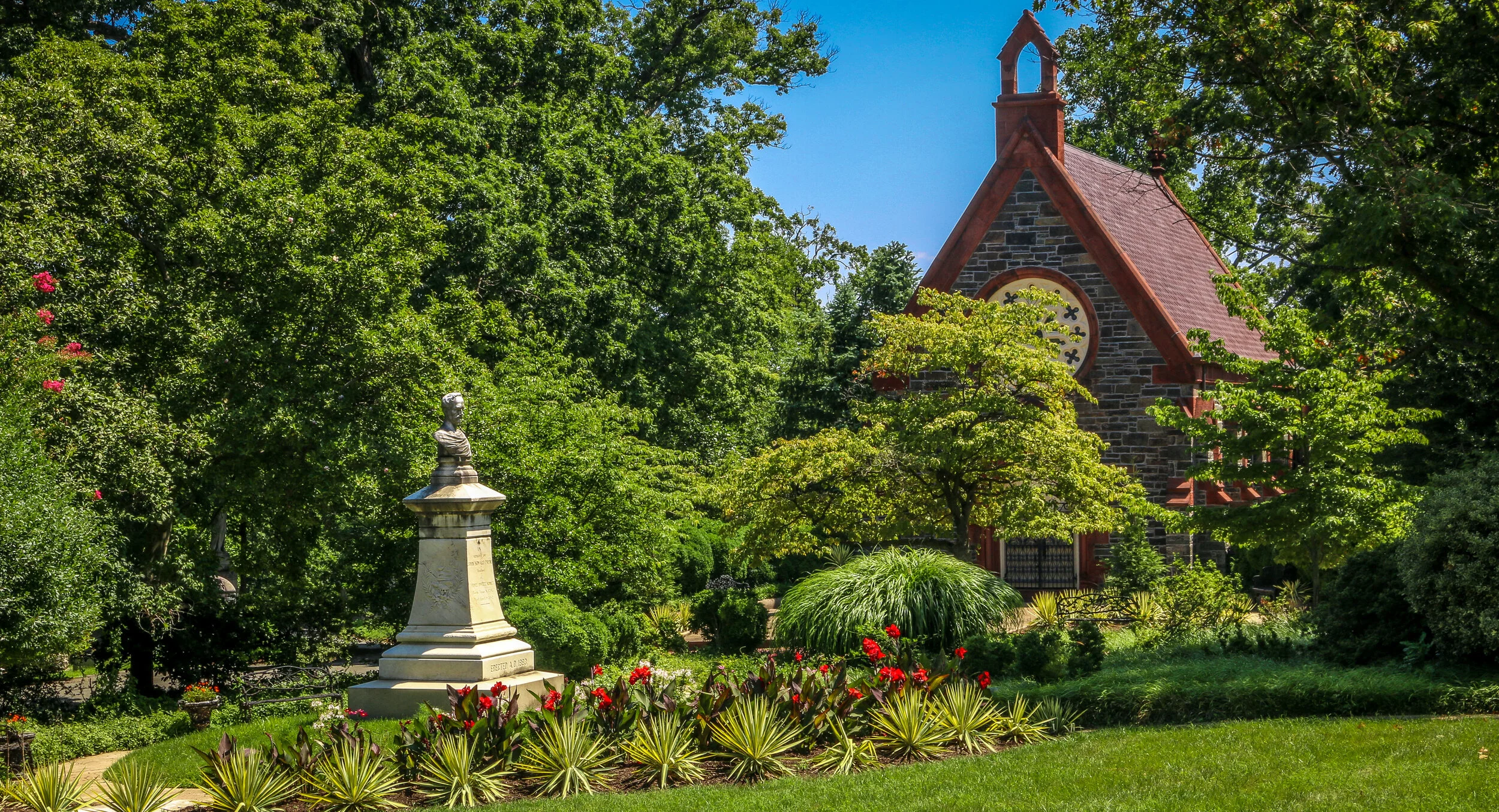Hello Everyone, September is upon us which means fall is right around the corner here in Washington D.C. We’ve gotten some rain here this week which has brought the temperatures down quite a bit, and cooler temperatures is more than welcome in my opinion. I’m not used to being here in the summer and the heat and humidity is a bit much to take, especially without the normal joys of summer like concerts, festivals and fairs. I spent my days this last week with my 2 year old buddy Mason and we’ve continued to hang out in the park, throw the ball around, play with his trucks, look at insects and flowers and have a good time. We laugh a lot and it’s really amazing to see him changing and growing day by day. He’s an absolute joy to spend time with and it’s been a treat to do just that. He’s been keeping me busy, but I’ve gotten out to do a few things this week which has been great as well.
Last Wednesday we celebrated my step-father’s birthday with some delicious steaks, cakes, champaign and a viewing of the classic film American Graffiti. It was a wonderful night and I’m happy to be home with him to celebrate it.
Thursday night I had a Zoom session with some of my friends from college which was also really great. They’re all good guys and it’s nice that we’re still in touch 20 years + down the road. We still spend a lot of time laughing which is important. There were a lot of Zoom sessions going on when all of this started, but the summer has put an end to many of them as my friends have been trying to have safe and distanced vacations and keep their kids learning and growing without summer camps and programs. Hopefully we will get some of them going again as school gets back in session and the cooler weather arrives. I really miss seeing people in person, but Zoom is better than nothing.
On a strangely angled corner lot just a couple of blocks from the White House, at the corner of New York Avenue and 18th Street, sits the beautifully designed Octagon House, one of the city’s oldest and most architecturally celebrated homes. The house was designed and built as the winter home for Colonel John Tayloe III, one of Virginia’s wealthiest plantation owners, and for a few months in 1814 served as the Presidential Mansion after the burning of the White House.
John Tayloe III was born on his family estate, Mount Airy, in 1770, the only boy in a family of 11 children. John’s father died when he was just 9 years old and after receiving an education in London he became the soul heir to the estate. In 1792, John married Ann Ogle whose father, Benjamin, had served as the 9th Governor of Maryland. The two would have 15 children of their own. The Tayloe fortune was made primarily through farming, shipbuilding and ironworks, but they were also some of the country’s earliest racehorse breeders. Tayloe was a fine horseman himself and served in the Dragoons under the commands of George Washington and Henry “Light Horse Harry” Lee during the Whiskey Rebellion in Western Pennsylvania. Later he served as a commander of the Cavalry of the District of Columbia. Just before the turn of the century, Tayloe was looking to build a winter residence in the city and had his sights set on cosmopolitan Philadelphia. His friend George Washington convinced him to build in the new Capital City instead. And so it was that John Tayloe III purchased Lot 8 in Square 170 to build his winter home within view of the White House.
There is some debate as to who designed Octagon House with the credit generally given to William Thornton who drew up the original designs for the U.S. Capitol. It is possible that the house was designed instead by our old friend William Lovering who designed several of the other houses in this series and many in early Washington. Regardless, it was Lovering who oversaw the construction of the home, thought to be a high point of the Federal Style of architecture. Needing to fit into a sloped, angled lot the house would be designed with amazing simplicity incorporating a circle, two rectangles and a triangle into the plan.The house was completed in 1801 and it is interesting that the Tayloe family chose to call it “Octagon House” since it only really has six sides. In addition to Mount Airy in Virginia, the Tayloe family also owned a 205 acre farm a few miles north of Octagon House called Petworth (from which today’s neighborhood in that area gets its name). Much to my delight Tayloe also built a racetrack just behind Lafayette Square and a stone’s throw from the White House.
Hi Everyone, well the last week of August has certainly snuck up on us. Summer is usually such a busy time for me, and this year it just wasn’t so it seems to have flown by. This week brought some very good news from the local side of Washington D.C: a new baby panda was born at the National Zoo. The pandas are very near and dear to our heart here in Washington and have been since Ling Ling and Hsing Hsing first arrived in 1972. I grew up alongside those two, and the city mourned their loss when they died. The two never had any babies which survived more than a few weeks. Thankfully we were able to bring two young pandas to Washington after they passed, and Tian Tian and Mei Xiang have had five babies, two of which lived to adulthood and have gone back to China. This new baby, as yet unnamed, is a bit of a surprise at their age, but we welcome it with open arms and pray for its survival. The next few weeks will be critical, so we’re keeping it in our prayers and in our hearts.
I’ve been spending more time with my two year old buddy, Mason, and we’ve been having a lot of fun together. His dad has pointed me to one of their favorite spots in Glover Archibald Park where we can sit by the stream and throw rocks in the water. It’s a peaceful place where we can hang out outside but in the cool creekside shade and listen to the cicadas. On the way there and the way back we look at all the different colored flowers in peoples’ yards and keep an eye out for bumblebees and butterflies – two of his, and my, favorites. Sometimes he rides his bike while I run alongside. Our days are full of singing and laughter and it’s been really wonderful to hang out with him. He’s been keeping me busy though and wears me out, so I haven’t been up to too much else this week (which is just fine with me).
Last Friday night we paid tribute to another lost rite of summer: the county fair. We gathered outside for some fried cheese and corn on the cob and shared a six pack of assorted beers with fair-like themes (many from Clown Shoes Brewing Company). Then we moved inside where we had a dime-toss, played some dice games, enjoyed some grilled sausages and chocolate eclairs and had a couple more beers. It definitely wasn’t as much fun as the real thing, and we missed the lights and sounds of the carnival rides and games, the animals, crafts and produce, but we had a pretty good time all things considered.
Maryland’s Old Main Streets Scenic Byway is a wonderful trip through some of the state’s most charming and historic towns. The byway begins in Emmitsburg where Maryland’s Catholic roots are on display at the incredible National Shrine to Our Lady of Lourdes and the Minor Basilica Shrine to St. Elizabeth Ann Seton. Both are beautiful places worth spending some time and it was definitely interesting to learn about Elizabeth Seton, the first person born in what would become the United States to be canonized by the Catholic church.
From there, the byway travels through historic Taneytown and on to Westminster, although since we were a bit pressed for time we headed straight to New Windsor. New Windsor is such a cute little town with beautiful Victorian homes and pleasant small-town feel. We stopped to pick up lunch at Uncle Matty’s Eatery and enjoyed it in the town’s small park.
After lunch we traveled on to Union Bridge where the beautiful old railway station has been converted into a museum. It was another quiet and pleasant town for a wander. The byway finishes in Thurmont with it’s beautiful old Main Street. log cabins and the Roddy Road Covered Bridge.
The Old Main Streets Scenic Byway is a pleasant way to while away a day and enjoy some small-town Americana. There are wonderful historic homes and businesses along the way, and it seemed like there would be some interesting museums under normal circumstances. I hope you enjoy these photos from the Old Main Streets of Northern Maryland…
Unlike most of the other properties I’ve featured in this series, Wheat Row hasn’t had any really famous residents. Nor has it hosted presidents or had any major historical events take place within its halls. If anything, it is reminiscent of how the regular people lived in the early days of Washington D.C. - just a common set of row houses set along an ordinary street.
The four connected townhouses which make up Wheat Row were built around 1794 and designed by architect William Lovering, whose architecture has featured prominently in this series so far. Even when they were built, the Georgian architectural style was considered out of date. People found the houses “small and poorly constructed of inferior materials”, and yet there they stand, 225 years later.
Wheat Row takes its name from one of its early residents, John Wheat, who lived in 1315 as early as 1819. Wheat was a local designer of gardens in the city and was listed in one census as a congressional messenger. He would later purchase 1319 and 1321 as well and his family lived along Wheat Row until a few years after the Civil War.
Hello Everyone, another week has come and gone here in Washington. Rains have brought cooler temperatures and I’ve been out taking lots of photos and hanging out with my favorite two year old. It’s been a fast week – they just seem to be speeding up on me. I guess routine will do that to a person. I’ve been very spoiled in my life to usually be doing so much over the course of a week that they often stretch out and feel longer than they are. Now the opposite seems true. I’m still happy to be healthy and safe and home with my people. It’s not a bad place to be or a bad group to be with, I just wish I knew there was an end date to all of this so I could make some concrete plans. Sometimes I find myself making travel plans just to be making travel plans because it’s something I’m used to doing. I guess that’s not a bad thing and it keeps me in practice. I’ve been reading Delia Owens’ Where the Crawdads Sing this week and have been enjoying it. It came recommended by two of my friends so I thought I’d give it a go. I don’t usually read a lot of fiction because there’s so much great non-fiction in the world, but this book is pretty quiet and reminds me of some of the beautiful places I’ve visited in coastal Carolina. It’s been a nice break. A few nice walks in the park as well have made it a pretty good week.
I’ve had a couple of nice days enjoying some time with Mason, my friends’ two year old son who I wrote about last week. I’m watching him a couple of times a week and really having fun with it. He’s a really sweet little boy and I love to see him laugh and smile and make connections in his head. We play with his trucks and read books together and when the sun is out we can go for a walk or a bike ride. He’s brought me a lot of joy over the last few weeks and reminds me that while the past is past, the future is yet to be written. I hope his will be a bright one in a healthy world and a country which celebrates its differences instead of destroys itself over them. At one point last week, the sun was shining in the back room where we play and he looked up and started catching things. I thought he was just playing, but soon realized that he was going after tiny strands of the dog’s hair which were floating in the afternoon sun. I couldn’t help but think what a magical world this is through his eyes. Spending time with him is special and will probably end up being the best part of this pandemic.
Friday we did our usual rounds to the grocery store and whatever other errands we needed to run for the week. That night we gathered to celebrate some wonderful Washington D.C. traditions. We had some half-smokes (traditional D.C. half pork – half beef sausages) with a chili sauce I tried to copy from Ben’s Chili Bowl, a local institution. We had some mambo wings – using sweet and tangy mambo sauce, another D.C. tradition. We listened to the sounds of Chuck Brown and Experience Unlimited and others who made our local gogo style of music, which never spread too far outside the beltway. We listened to others too, from Duke Ellington to Marvin Gaye to Fugazi and back again, which have brought our local musical talent to the masses. Friends have been sending me some things to help enhance our parties from all over the country, and it was fun to incorporate some into our weekly celebration…
As many of you remember, we spent much of the spring and early summer tracing the battles of the Eastern Theater of the Civil War from Manassas to Appomattox. As we got to the end of the war though, we came to realize that there was one more casualty we needed to consider and one more route to follow to gain some closure to our tour. That was the trail taken by John Wilkes Booth after he assassinated Abraham Lincoln on April 14th, 1865 at Ford’s Theater. Booth and his accomplice David Herold led the authorities on a nearly two week manhunt which ended on April 26th when Booth was cornered and killed on the Garrett Farm in Virginia. This route is now one of Maryland’s scenic byways and one of the country’s more historic ones.
Our day began at historic Ford’s Theater. Ford’s Theater is a wonderful place managed by the National Park Service and just blocks from the White House which still functions as an active theater. My folks and I try and get there every December to watch their wonderful rendition of A Christmas Carol. The box where President Lincoln was shot is preserved and well cared for and there is a small museum in the basement dedicated to the assassination. After Lincoln was shot, he was taken across the street to The Peterson House, where he would die of his injury soon thereafter. The Peterson House is also managed by the National Park Service and is open for tours.
Booth, on the other hand, leapt to the stage, catching his boot spur and breaking his leg in the process, but still managed to escape out the back door of the theater. There he mounted his horse and sped off into the night, crossing the Potomac on the Navy Yard Bridge and then rendezvousing with his accomplice David Herold. The two quickly made their way to the tavern of Mary Surratt in Surrattsville near Clinton where they retrieved rifles, field glasses and other supplies they had stashed there…
This house was built in 1794 and designed by architect William Lovering who is also credited with designing the Thomas Law House (featured last in this series), The Maples (which will be featured next), the Octagon House and Wheat Row, both of which will be featured later in this series. The house was designed in the Federal style popular at the time and was built as a double house, occupying 468 and 470 N. St. SW.
The lot on which the house was built was originally owned by Notley Young who deeded it to the City Commissioners when the site of the federal city was first determined. Captain William Mayne Duncanson, a wealthy merchant who came to Washington from Europe on a boat with Thomas Law in 1795, lived in the 470 half of the double house from 1795-96. He lived in the house while awaiting his new home, later known as The Maples, was being built on Capitol Hill. The Maples will be featured next in this series.
Several years later, the other half of this house was occupied by William Cranch. Cranch was the son of Mary Smith whose sister was Abigail Adams, making William the nephew, by marriage, of President John Adams. William married Nancy Greenleaf in 1795 and had four sons and three daughters. Their great-grandson was poet T.S. Elliot
A Harvard educated lawyer, Cranch moved to Washington D.C. in 1791 where he worked in private practice for 10 years. From 1800-1801 Cranch served as a City Commissioner for the District before being nominated by his uncle, John Adams, to serve on the newly established U.S. Circuit Court for the District of Columbia
Hello Everyone, it’s hard for me to even fathom that this is week 20 of this post series. I was hoping when I arrived home in the beginning of April that I would only be here for a few weeks and then I would be back out on the road, but here I am 20 weeks later. I’m still enormously grateful to have a place to weather this storm, especially knowing that things could be much worse if I didn’t. I just wish I knew what the end date to all of this was so I could make some plans. It’s been a quietly busy week here in Washington and I’ve actually done quite a bit which has been really nice. I’ve also had some good news in my feed this week which also helps. One of my best friends welcomed a new baby boy to the world this week in New Orleans, so welcome Theodore. Another friend of mine from grade school has announced his wife’s pregnancy this week as well. These are both reminders to me that the world has continued to turn even if my wheels have stopped doing so.
Last Thursday I began a new role which I’ve really enjoyed, even though I’ve only done it a couple of times. My friend James was called back to work after a few months of furlough, but his two year old son’s daycare is still closed. So I’m going to be spending some time with young Mason over the next few weeks or months so they can work and we can play. Mason is a sweet kid, and it’s been a real treat to watch him. His smiles and laughter are such a counterbalance to the challenges we are facing in this country and in the world, and it’s a welcome change. I’ve always loved working with kids, and it’s a wonderful opportunity to spend some time watching him grow up. It’s been great to experience the world through his eyes and I’ll be gladly helping out with this for a while until things change. That could happen tomorrow or a year from now, we’ll just have to wait and see.
Last weekend was also a lot of fun here. After celebrating the “holidays” the last few weeks, we settled in on Friday for a quiet “pub night” of wings, nachos and beers. It was nice to have a relaxing night, listen to some good music and enjoy our time together. Saturday my mom and I headed out to check out some of Washington D.C.’s oldest firehouses for an upcoming photo essay I’m putting together
This post shares photos and a brief history of the Thomas Law House in Southwest Washington D.C.
The Thomas Law House was built between 1794 and 1796. It was designed by architect William Lovering who is credited with the design of several other properties which will be featured later in this series including The Octagon House, Wheat Row and the Duncannon-Cranch House. Thomas Law, formerly of the British East India Company, had recently immigrated to the United States with two of his three illegitimate sons born from his Indian mistress. He met and married Elizabeth Parke Custis, who was twenty years his junior, in 1796 and the couple moved into this newly built home which was then dubbed “Honeymoon House”. Elizabeth Parke Custis was the eldest granddaughter of Martha Washington from her first marriage. Elizabeth’s brother was George Washington Parke Custis, the builder of Arlington House (the Custis-Lee Mansion) and the father of Mary Anne Randolph Custis who would marry Robert E. Lee. Thomas and Elizabeth would live in this beautiful Federal Style home for only about five months before moving to a new home which was then under construction. They would divorce in 1811.
From 1814-1827, this house was occupied by Richard Bland Lee, brother of Henry “Lighthorse Harry” Lee and uncle of Robert E. Lee. Richard was the second cousin of Thomas Sim Lee, whose winter house in Georgetown was featured earlier in this series. Richard had served as a U.S. Representative from Virginia in the very first session of congress and had helped negotiate the Compromise of 1890 which established the Capital City of Washington D.C. He served three terms in congress and then returned to his family’s tobacco plantation – Sully – in Chantilly, Virginia. Financial hardships in the family eventually forced the sale of Sully after which Richard and his wife moved to the Thomas Law House. Richard would serve under President James Madison as a commissioner charged with helping rebuild the city after the War of 1812 and would later be appointed as a judge by James Monroe. He lived in this home until his death in 1827.
Hello Everyone, well August is upon us and I’ve personally passed the 4 month mark of being sheltered- in-place here in Washington. It’s been a quiet week for the most part which is a very good thing sometimes. I’ve been enjoying baseball games on the radio, long morning walks in Rock Creek Park and working on my book. Hurricane Isaias passed by us yesterday dousing us with some much needed rain and the heat and humidity seem to have backed off for a minute. Despite the fact that the pandemic is still in full effect, I feel pretty calm and balanced this week, and for that I am grateful. Perhaps it’s the break in the heat and the beginning of August – both of which signal that summer is winding down. There are many things I love about summer, but the heat is not one of them. Whatever it is, I’m happy to be feeling more like myself this week.
I was thrilled to see the passage of the Great American Outdoors Act this week by a bipartisan effort with the support of the president. This bill will give much needed funding to our National Parks in this country to try and relieve some of the backlog of maintenance needs which has piled up for decades. I love the American National Park System and have been on a lifelong quest to visit all four hundred and some units. This year I made a turn into the final hundred. These truly are our greatest treasures and they are even more special because as public lands they belong to all of us. Never listen to anyone if they tell you these are “government owned land”. They are not – they are yours and mine to enjoy and need to be maintained and preserved for future generations as well. Kudos to congress and the president for coming together to do something great. Beyond that, though, I’ve been trying to avoid the news as best I can.
This past Friday, as a follow-up to last week’s Christmas in July celebration, we had a Mid-Year New Year Party complete with some wonderful hors d’oeuvres and (a tad too much) champagne. Since the first half of 2020 hasn’t turned out very well, we were looking ahead at the second half with high hopes of a vaccine and a quick return to a more normal life.
Saturday I spent behind the computer writing about some of Washington DC’s oldest homes – a project which was supposed to be a single post but got too complicated so I decided to look at each property individually. It’s a project I will continue working on for the next couple of weeks.
Last week I decided I wanted to check out a little bit of history and a little bit of seascape as well. It’s the middle of summer and I miss the beach but I’m not heading to the crowded Atlantic beaches right now. So I settled on a Chesapeake Bay view from the western shore towns of North Beach and Chesapeake Beach, only about an hour from Washington D.C. at a straight shot. I also wanted to take some photos at the beautiful Maryland State Capitol Building and wander around Annapolis’ Historic District as well. Connecting these two is Maryland’s Roots and Tides Scenic Byway.
Obviously, some of the key highlights of the journey were closed due to the pandemic, but I still enjoyed a little meander through the countryside, and the beach communities I ended up at sated my need for a little bit of time on the water. It’s definitely good to be out exploring, and I really enjoyed the Roots and Tides Scenic Byway. I hope you enjoy the photos I took along the way…


